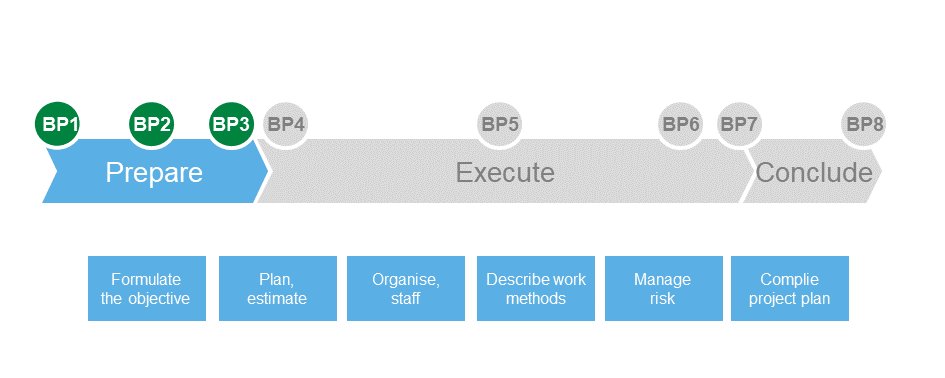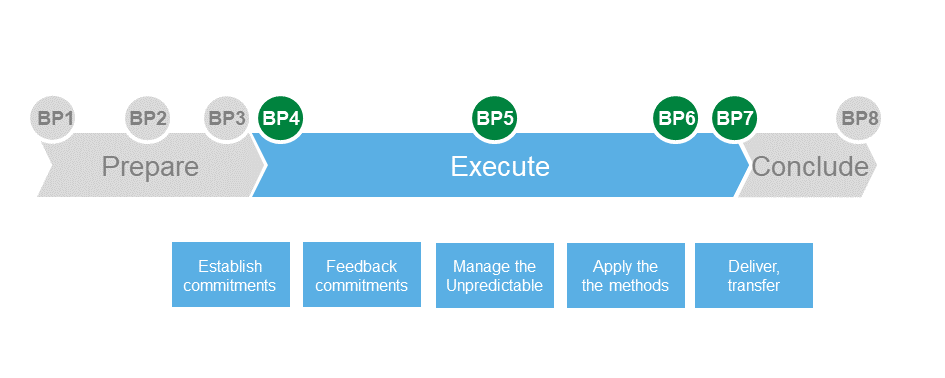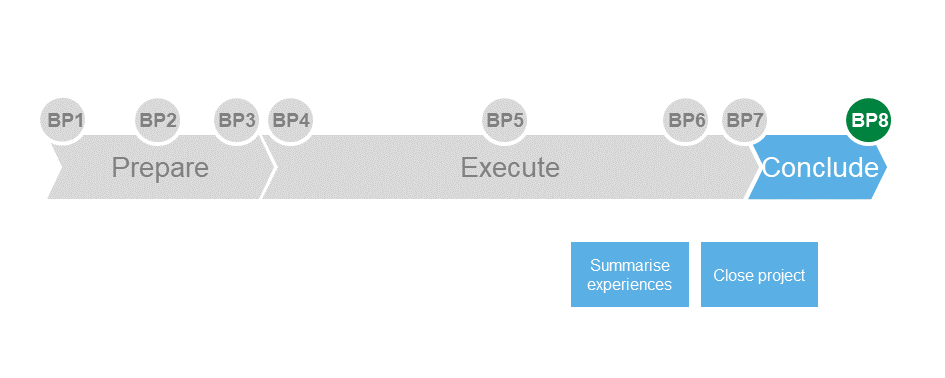
PPS project steering
The PPS project model provides support for all types of projects.
PPS project steering
The PPS Project Model provides support for all types of projects. The model is scalable, based on practical experience and in line with standards in the field.
The project model with a focus on creating benefits
The PPS project model shows what should be done, how it should be done and who is responsible for what. Practical support for project management can be found in the various skills sections and templates etc. included in the project model.
Projects are different, the conditions and the need for governance vary. Not everything described in the project model can - or needs to - be used in all projects. Making conscious choices and customising the use of the model is a necessary part of everyday project management. The project model provides support for how to do this in the form of skills, templates, checklists, workflows and role descriptions. The project management is responsible for delivering the agreed project goal.
The PPS project model for project management describes the three phases; preparation, implementation and decommissioning. The phases are complemented by Decision Points, where the Steering Group makes decisions, and the Steps that the project needs to go through. The steps contain support that describes how to do in the form of skills, templates, checklists, workflows and role descriptions.
The PPS project model consists of three phases, prepare, implement and decommission.
The preparation phase in projects
Preparation refers to the work between BP1 and BP3. The aim is to define what the project objectives and boundaries are and how the work will be practically implemented. A project plan that includes a project objective should be agreed with the steering group at BP3 and forms the basis for implementation.
In the preparation phase, the most appropriate production strategy for implementation is chosen. The PPS model can be used in a flexible way and it is easy to combine, for example, agile and waterfall in the same project.
The production strategies can also be combined to suit the needs and organisation.
The execute phase of projects

This is where the results are created that lead to the fulfilment of the project objective. The way in which the results are created and the strategy with which the work is carried out can vary, but the management model can always be used. An increasingly common approach is agile. Active feedback on needs, commitments and results is complemented by orderly change management. Benefits are continuously checked during the project to ensure a useful outcome and a successful project.
Conclude phase of the project

Concluding means returning the resources used by the project. A summary of the project's progress and lessons learnt is compiled in a final report to be reused in future projects. The project closes in BP8.
The PPS model is much more than just a project model
The PPS model is a complete support for all operations from strategic management, business benefit management, business change management to project management. The model provides support for all roles and clarifies what responsibilities and powers these roles should have. The fact that the roles interact is central to the model and there is a lot of support for leadership and collaboration. The project model also contains guides and templates. The model is today so much more than just a project model. Read more about the full PPS model.
Expected benefit and business change
The project model's link to expected benefits and business change in operations
The project focuses on achieving the agreed project goal but also needs to be aware of the benefits the project will contribute to in operations. In order for the project to contribute to the greatest possible benefit in the operations, it also needs to work on business changes. This work is led by the benefit owner.
The benefit owner's work focuses on ensuring the expected benefit. From early on and throughout the production of the project's results, the expected benefits and costs of the project are evaluated. Necessary business changes in operations are planned and implemented to ensure that the expected benefit is achieved. The work of the benefit owner also includes providing input for the overall prioritisation of the project portfolio.